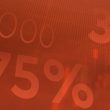by Stephen Vanelli, CFA, Knowledge Leaders Capital
The Bank of Japan met last night to cap off a week of central bank activity. From their policy statement:
“The Bank decided, by a unanimous vote, to set the following guideline for market operations for the intermeeting period.
The short-term policy interest rate: The Bank will apply a negative interest rate of minus 0.1 percent to the Policy-Rate Balances in current accounts held by financial institutions at the Bank.
The long-term interest rate: The Bank will purchase a necessary amount of Japanese government bonds (JGBs) without setting an upper limit so that 10-year JGB yields will remain at around zero percent.”
When discussing inflation they opined: “On the price front, the year-on-year rate of increase in the consumer price index (CPI, all items less fresh food) is slower than a while ago, mainly due to the effects of pushing down energy prices from the government’s economic measures, but it has been at around 3 percent recently owing to the effects of a pass-through to consumer prices of cost increases led by the past rise in import prices. Inflation expectations have shown some upward movements again.”
With respect to growth, the BoJ expressed a rather optimistic assessment: “Japan’s economy is likely to continue recovering moderately for the time being, supported by factors such as the materialization of pent-up demand, although it is expected to be under downward pressure stemming from a slowdown in the pace of recovery in overseas economies. Thereafter, as a virtuous cycle from income to spending gradually intensifies, Japan’s economy is projected to continue growing at a pace above its potential growth rate.”
So, inflation pressures are resilient and growth is expected to continue above potential. Isn’t that all the ingredients needed for a central banker to talk hawkish?
Not in Japan, where the BoJ statement goes on to emphasize the uncertainty of global conditions as the reason for its inaction: “Concerning risks to the outlook, there are extremely high uncertainties surrounding Japan’s economic activity and prices, including developments in overseas economic activity and prices, developments in commodity prices, and domestic firms’ wage- and price-setting behavior… With extremely high uncertainties surrounding economies and financial markets at home and abroad, the Bank will patiently continue with monetary easing while nimbly responding to developments in economic activity and prices as well as financial conditions.”
So, there you have it. Inflation is higher than expected, with another uptick expected, while growth is above potential and the BoJ decides to sit on its hands. Of course!
The markets, on the other hand, seem to be looking through these contradictory statements. This we can observe in two ways. First, 10-Year JGBs keep pushing higher toward the new 1% cap on yields, with the inflation swap suggesting yet higher yields to come.
Second, looking at the OIS model, the market seems to be pricing in the BoJ moving the overnight rate—currently at -0.1%–to something higher, into positive territory. Futures are pricing overnight rates to rise to 13bps by next June, which translates into one 25bps increase in the overnight rate. More imminently, the market is pricing the overnight rate to flip into positive territory by December 2023 and continue rising from there.
So, while the BoJ continues with its message of patience, the market is beginning to test that patience. It seems the BoJ is in play, and they don’t even seem to realize this, not acknowledging reality in their statement or even addressing market expectations.
Sign up for reports from Knowledge Leaders Capital.
Copyright © Knowledge Leaders Capital
















